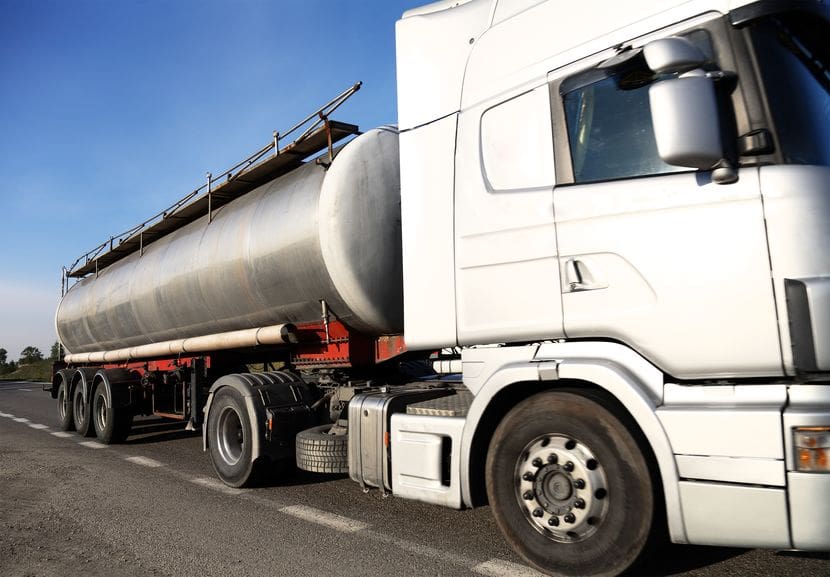Crude Oil and Gas are transported through numerous options, from a natural field where the reserves are extracted to the manufacturing facilities where they are processed or refined. This process requires optimal performance from the transport facilities used, as minor deficiencies can lead to significant losses in quality as well as the efficiency of the process.
In lieu of these losses, fleet management for oil and gas Extraction Companies is a task that cannot be ignored. While the most preferred mode of transportation for oil across borders is through ship and pipelines, domestic transportation is mostly handled through rail or a fleet of oil tankers.
The American Association of Railroads believes that the country saw a movement of 434,000 carloads of crude oil across rail during the year 2013. This figure has significantly increased over time and is an indication of how manufacturers trust rail as a viable option.
While rail options are used for bigger routes, manufacturers usually take the help of oil tanker fleets for transportation using smaller routes, usually intra-city or state. While trucks are not the most preferred option for manufacturers, because of frequent spillages and accidents, the cost savings on shorter routes propelled the increase in the popularity of tankers for oil transportation in the US and Canada during the last half-a-decade.
Land transportation fleets; however, come with their own risks attached. A recent study found out that land routes had the highest rate of incidents per billion ton-miles in comparison to pipelines, ship, and rail. We will look at these risks below:
1. Infrastructure
To operate in a feasible manner, trucks need proper infrastructure along the way. There need to be motels, pumps and smooth highways along their way, so that occurrences of spillages and accidents are mitigated. However, transportation on land suffers because of uneven roads and poor infrastructure along the way.
Transportation through rail also faces similar problems, as 60 percent of train accidents are said to be caused by the derailment of tracks. Broken rails, welds, obstructions, and buckled tracks account for the majority of these cases. With this constant threat hanging at all times, manufacturers have to take extra precautions and maybe even create reserves for some losses before the inevitable happens.
2. Regulatory
There is a lack of proper regulation on the inflow and outflow of trucks and tankers from states in the U.S. The United States currently does not employ any track on the number of cargo trucks entering and exiting its states. This lack of regulation and proper data might create a risk going down the line.
There are no concrete figures on just how much oil is being transported on roads. Is it a major part of the total quantity being transported, or is it not that much? Without sufficient data to track these movements, the government and manufacturers wouldn’t be able to better gauge the effectiveness of this method.
3. Collisions
Unlike all other forms of transportation that we have talked about, trucks and tankers share the same roads and infrastructure as the general public does. The highways, neighborhoods, roads, filling stations and motels for tanker drivers are the same as those for the general public. Trucks also have to pass through densely populated neighborhoods at times. Hence, they are in direct contact with the general public. This direct contact leads to accidents and collisions that lead to catastrophic results. Oil trucks can collide with general traffic and cause serious hazards to neighborhoods.
4. Truck Design
Tanker trucks for oil are typically loaded from the bottom. Once the truck has made its journey, and oil is being extracted from it, the manufacturer might find a difference of more than 50 gallons of oil. This oil is difficult to extract and can stubbornly stick to the bottom of the truck’s tank. The presence of residue oil, even after the delivery has been made, is known as ‘wetlines.’ These wetlines may contribute to fires and other accidents, even after delivery is completed.
5. Limited Innovation
There is limited innovation and new technology coming through for transportation being handled through trucks. It’s the same old ineffective methods that take manufacturers extra time, owing to the troubles on-road and the regulations that need to be followed.
6. Huge Investment
It takes a huge investment to acquire a fleet of your own or to outsource the transportation job to a third party fleet. In any case, having multiple tankers run across the country can be a massive investment.
7. Screening Labor
Not everyone can be trusted with taking a huge tanker across the country. This is why the screening process for the labor required to drive the vehicles should be extremely detailed.
8. Sustainability
With the lack of proper data coming in related to the flow of oil tankers across the state, oil manufacturers cannot really count on the efficiency and sustainability of the method for the future to come.
The risks outlined in this study will be of great help for organizations looking to manage risks and alleviate the threat that they pose to operations currently.






